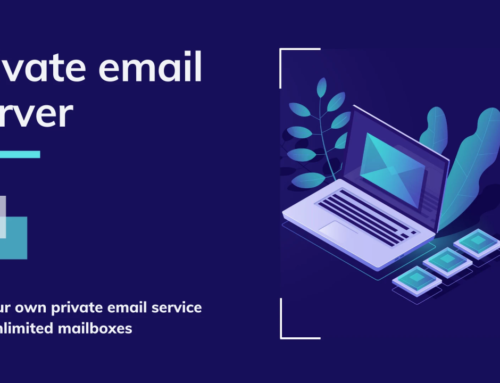Mozilla Thunderbird is a mature, open source email client that emphasizes privacy, standards, and control. It runs the same on Windows, macOS, and Linux, supports modern authentication, and includes built-in OpenPGP for encrypted email. Many people switch to Thunderbird to escape fragile, monolithic data files in other clients; that benefit matters if you keep a lot of mail, but it’s only one of many reasons to switch. This article explains the value proposition, trade-offs, and a clear path to get started.
What makes Thunderbird different
- Open source and vendor-neutral: No licensing lock-in or ad-driven features. Thunderbird speaks open standards (IMAP/SMTP for mail, CalDAV/CardDAV for calendars and contacts) so you can move providers without changing your tools.
- Privacy and security by design: Native OpenPGP lets you generate or import keys and send signed or encrypted messages without third-party add-ons. S/MIME is supported for certificate-based workflows. Strong TLS and OAuth2 are available with major providers.
- Cross-platform parity: A consistent experience across Windows, macOS, and Linux keeps mixed-OS teams aligned and reduces training overhead.
- Productivity that scales: Tags, powerful filters, saved searches (virtual folders), conversation view, unified inbox, multiple identities, per-folder templates, and quick filtering make high-volume triage faster.
- Customizable and extensible: Add-ons and themes let you tune workflow, UI density, and features instead of adapting to a rigid client.
- Resilient storage options: Thunderbird can use a file-per-message store (Maildir), reducing single-file corruption risk. This is especially helpful if you keep years of mail online.
When switching makes sense
- Privacy-first users and teams: You want transparent, auditable software with minimal telemetry and broad encryption support.
- Multi-account professionals: You manage several domains or identities and need consistent signatures, SMTP identities, and unified search.
- Cross-platform environments: Your team mixes Windows, macOS, and Linux and prefers one tool that behaves the same everywhere.
- Large mail stores: You keep extensive history and want to reduce the operational risk of giant single-file databases found in other clients.
- Open-standards stacks: You already use or plan to use IMAP/SMTP, CalDAV, and CardDAV (or are moving to Linux on the desktop).
What you might need to replace
- Deep Exchange/EWS features: Thunderbird focuses on open protocols. If you rely on Exchange-only features beyond IMAP/SMTP and iMIP invites, plan to keep web access for those functions or use open-standards services.
- Proprietary suite integrations: Teams/SharePoint-style automations do not live inside Thunderbird; pair it with the web or desktop apps you already use.
Implementation options at a glance
There are two clean ways to start. Choose the one that matches your needs and risk tolerance; detailed steps are in our knowledgebase.
- Clean IMAP setup: Install Thunderbird, add your mailbox with IMAP and SSL/TLS, and start fresh. Configure tags, filters, and yearly Archives to keep Inbox and Sent lean.
- Bring history, then continue on IMAP: Import legacy mail (PST, MBOX, or EML) into Thunderbird or upload it to your server via IMAP, then use Thunderbird for day-to-day work.
Recommended setup checklist
- Add your account with IMAP and SSL/TLS; enable OAuth2 if your provider supports it.
- Decide on storage: keep the default store or enable Maildir (file-per-message) if you maintain very large archives.
- Enable OpenPGP, create or import your keypair, and attach your public key to first contact with frequent recipients.
- Define tags (for example: urgent, waiting, invoices) and create saved searches for cross-folder views of those tags.
- Create yearly Archive folders and move older mail out of Inbox/Sent on a schedule.
- Back up your Thunderbird profile regularly, especially before large imports or folder restructures.
Security and privacy defaults to review
- Remote content in messages: keep remote images off by default; allow per-sender.
- Junk and phishing controls: enable training and review the junk folder periodically.
- Certificate handling: leave strict TLS on; avoid disabling validation to “make it work.”
- Encryption defaults: choose sign or encrypt by default for sensitive mailboxes.
Resources and next steps
- Why and how to switch to Thunderbird (KB) — step-by-step migration paths and import options.
- Official guide: switching to Thunderbird (Mozilla Support) — canonical reference from the Thunderbird team.
- Thunderbird — official site and downloads.
- OpenPGP — the standard behind Thunderbird’s built-in encryption.
- Why Noiz supports Thunderbird — our stance on open standards and sustainable software.
- Switch to Linux: why and how — pair a privacy-first desktop with Thunderbird.
Prefer a managed, privacy-first email stack
Thunderbird works best with standards-based servers. If you want a solution designed for privacy, reliability, and support, start here:
- Why you should choose a private email server — service overview and business case.
- Private email server — plans and ordering.

